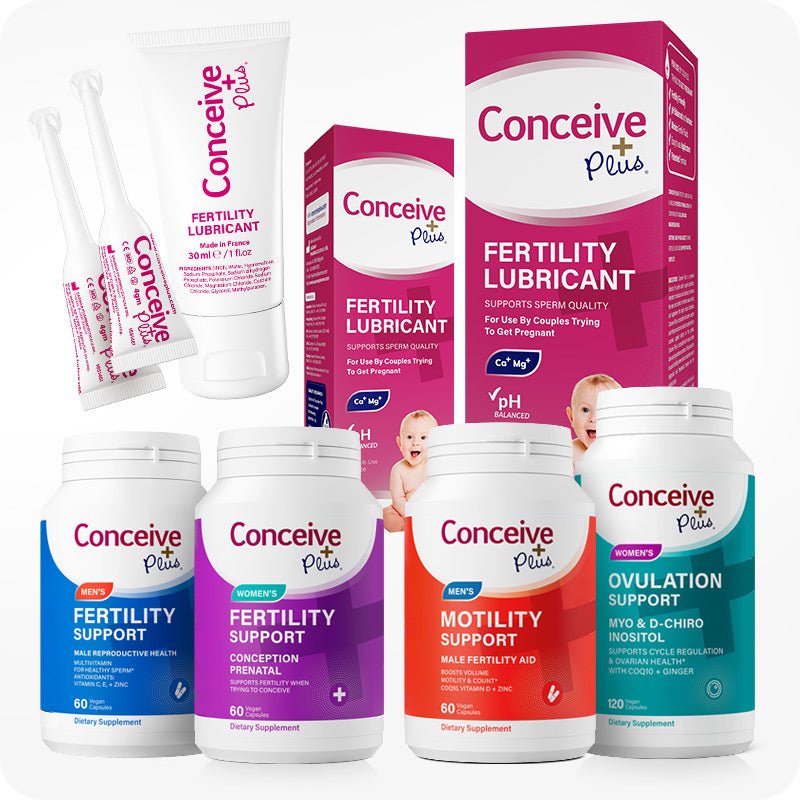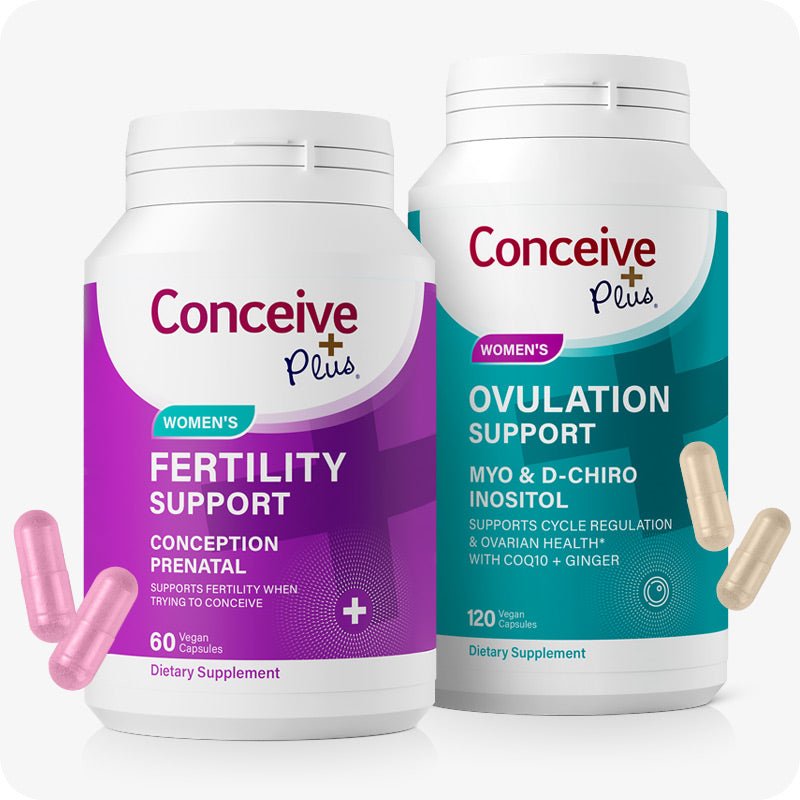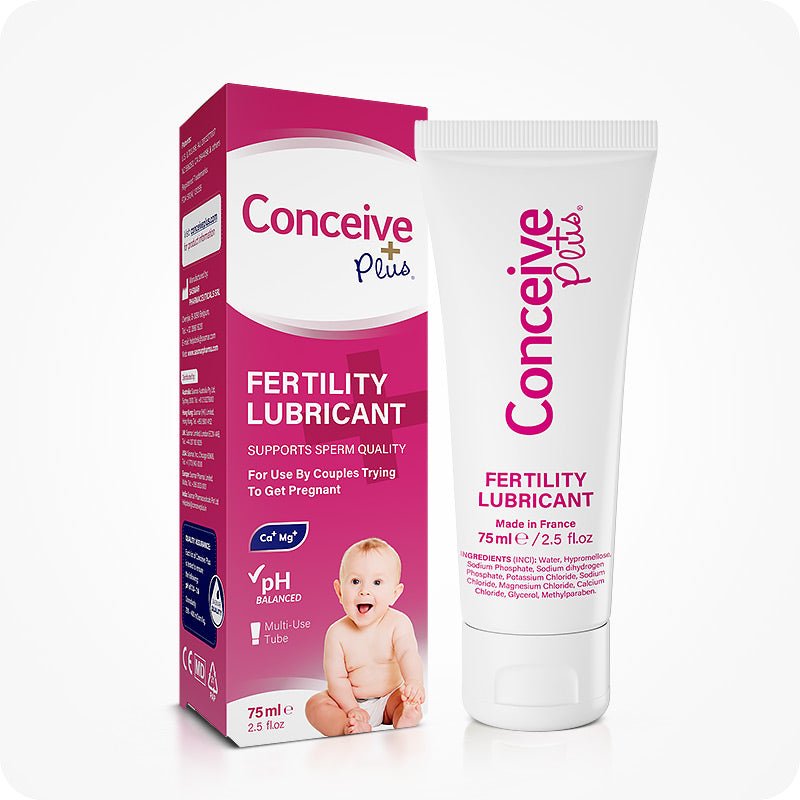How High Fertility Differs from Peak Fertility and Why It Matters

Trying to conceive can be one of the most exciting yet confusing journeys in life. If you’re just starting out, you might’ve heard terms like high fertility and peak fertility being thrown around, but what do they actually mean? More importantly, how do they affect your chances of getting pregnant? These terms are often misunderstood, yet they’re so important to know when you’re actively trying for a baby. They represent different phases of your fertile window, each playing its own role in the process of conception.
In this article, we’ll dig into the difference between the two and how they can help you time things just right for the best chance at starting (or growing) your family.
What Does High Fertility Mean?
So, what does high fertility mean? In simple terms, it’s the part of your cycle when your body is getting ready to ovulate. It’s like the warm-up act before the main event. During this time, your chances of conceiving are higher than usual because your body is gearing up to release an egg.
Here’s what happens: as you approach ovulation, your body starts producing more estrogen. This hormone plays a big role in thickening the lining of your uterus, basically making a comfy little nest for a fertilized egg to implant. But estrogen doesn’t just stop there—it also triggers changes in your cervical mucus.
Around this time, you might notice your cervical mucus becomes clear, stretchy, and a bit slippery—kind of like raw egg whites. This mucus helps sperm survive and swim more easily toward the egg. High fertility isn’t just about what’s happening inside your body; it’s about creating the perfect environment for sperm to stick around. And guess what? Sperm can live in your body for up to five days during this phase. That means even if you have sex a few days before ovulation, you still have a chance of getting pregnant.
This phase usually lasts a few days leading up to ovulation. While it’s not as “golden” as peak fertility, it’s still a really good time to try. Timing intercourse during this window is super important because it makes sure sperm are already in place and ready when your egg is finally released [1].
How to Recognize Signs of High Fertility in a Woman
Knowing the signs of high fertility in a woman can really help if you’re trying to conceive. Modern fertility tools and fertility awareness methods can make it easier to understand these signals. Your body gives out some pretty clear signals when you’re entering this phase. The tricky part is learning to spot them.
First off, keep an eye on your cervical mucus. It’s one of the easiest ways to know what’s going on. When you’re in your high fertility phase, your mucus becomes thinner, clearer, and more elastic—almost like it’s telling sperm, “Hey, come on in!”
Another big sign is an increase in your libido. Yep, your body naturally boosts your sex drive during this time. It’s biology’s way of making sure you’re motivated to try for a baby. Some women also notice mild cramping or bloating as their ovaries prepare to release an egg. This is totally normal and can be a helpful clue that you’re in the fertile zone.
Lastly, some women track their basal body temperature (BBT) to figure out where they are in their cycle. While your temperature doesn’t usually rise until after ovulation, some women notice a slight dip right before it happens. It’s subtle, but if you’re paying attention, it can be a helpful indicator [2].
What Does Peak Fertility Mean?
Now let’s talk about peak fertility, which is the time when you’re the most likely to conceive. If high fertility is the warm-up, peak fertility is the main event. It happens right around ovulation, when your body releases an egg into the fallopian tube, ready to be fertilized.
So, what does peak fertility mean exactly? It’s the point in your cycle when the chances of getting pregnant are at their absolute highest. This phase is triggered by a surge in a hormone called luteinizing hormone (LH). Once this surge happens, ovulation usually occurs within 24 to 36 hours.
Here’s the catch: the egg only sticks around for about 12 to 24 hours after it’s released. So the timing is tight. If sperm isn’t there waiting, the egg will just pass through the uterus, and the chance for conception that cycle is gone.
This is why tracking peak fertility is so important. It’s your best shot at getting pregnant during any given cycle. Timing intercourse as close as possible to ovulation can significantly increase your chances of conceiving [3].
How Many Days of High Fertility Before Peak?
You’re probably wondering, how many days of high fertility before peak? On average, most women experience about three to five days of high fertility before reaching their peak. This is because sperm can survive in the reproductive tract for several days, so having intercourse during high fertility ensures that sperm are already in place by the time ovulation occurs.
The number of high fertility days can vary from woman to woman. Factors like cycle length, hormonal balance, and overall health all play a role. Some women with longer cycles may have more high fertility days, while others with shorter cycles may have fewer.
If you’re tracking your cycle and notice changes in cervical mucus or libido several days before ovulation, these are good indicators that you’re in your high fertility phase. By the time you hit your peak fertility days, your chances of conceiving are at their highest [4].
High Fertility vs. Peak Fertility: What’s the Difference?
It’s easy to get confused between high fertility vs peak fertility because they’re both part of the same fertile window. But they’re not the same thing, and understanding the difference can make a big impact on your conception efforts.
High fertility refers to the days leading up to ovulation. During this time, your body is getting everything ready—like producing sperm-friendly cervical mucus and boosting estrogen levels. It’s essentially laying the groundwork for fertilization.
Peak fertility, on the other hand, is the 1–2 days right before and during ovulation. This is when the egg is released, and your chances of getting pregnant are at their absolute highest. If you think of high fertility as the preparation stage, peak fertility is the execution.
Both phases are important for conception, but peak fertility carries the highest odds. That said, don’t wait until peak fertility to start trying. Engaging in intercourse during high fertility ensures sperm are already in place when ovulation happens [5].
When Is Peak Ovulation?
If you’re trying to figure out when is peak ovulation, the timing can vary depending on your cycle. For most women, ovulation happens about 12 to 16 days before the start of their next period. If you have a regular 28-day cycle, ovulation typically occurs on day 14.
But here’s the thing—not everyone has a textbook cycle. Some women ovulate earlier, while others ovulate later. That’s why it’s important to track your body’s signals, like changes in cervical mucus or using an ovulation predictor kit (OPK) to detect your LH surge.
Once you pinpoint when ovulation happens in your cycle, you can better time intercourse during your peak fertility days for the best chance of conceiving [6].
How to Track Fertility
There are lots of ways to track your fertility and figure out both high and peak fertility. One of the most basic methods is the calendar method, where you track the first day of your period and the length of your cycle over several months. This helps you estimate when ovulation will occur.
Another popular method is tracking your basal body temperature. By taking your temperature every morning before you get out of bed, you can identify the small rise that occurs after ovulation.
Cervical mucus monitoring is also really effective. By observing changes in texture and appearance, you can tell when you’re entering high fertility and approaching peak fertility.
For more accuracy, many women use ovulation predictor kits (OPKs). These kits measure the LH surge in your urine, helping you pinpoint exactly when ovulation is about to happen [7].
Factors That Affect Fertility
It’s important to know that fertility isn’t just about timing. Other factors can play a big role, too. Age is one of the most significant factors, as fertility naturally declines after age 35.
Lifestyle choices like smoking, drinking, and poor diet can also impact fertility. Stress is another major factor that often gets overlooked. High levels of stress can throw off your hormonal balance and make it harder to conceive.
Underlying health conditions like PCOS or endometriosis can also affect your chances of getting pregnant. If you suspect something might be interfering with your fertility, it’s worth speaking with a healthcare professional [8].
Nutrients That Support Fertility
Certain nutrients are known to support reproductive health and improve your chances of conceiving. Folic acid, for example, is crucial for egg health and helps reduce the risk of birth defects. Myo-inositol and D-chiro-inositol can improve ovulation and egg quality, especially for women with PCOS.
CoQ10 is another powerful antioxidant that protects eggs and sperm from damage. Vitamin D supports hormone balance, while zinc helps with sperm quality and hormone regulation [9].
The Bottom Line
Understanding the difference between high fertility and peak fertility is a game-changer for anyone trying to conceive. High fertility gives you a good shot, but peak fertility is your best chance. Knowing when these phases happen and how to track them can make all the difference.
Take control of your fertility journey, stay patient, and don’t be afraid to seek help if you need it. You’ve got this!
FAQs
What’s the difference between high fertility and peak fertility?
High fertility is the lead-up to ovulation, while peak fertility is right before and during ovulation when conception chances are the highest.
How many days of high fertility before peak?
It’s usually about 3–5 days before peak fertility begins.
Can I get pregnant outside of high or peak fertility?
It’s possible but much less likely.
What nutrients support fertility?
Folic acid, CoQ10, myo-inositol, vitamin D, and zinc are all great for boosting fertility.
How can I track peak fertility?
Use ovulation predictor kits, track cervical mucus changes, or monitor basal body temperature.
Citations
- Wilcox, A. J., Weinberg, C. R., & Baird, D. D. (1995). Timing of sexual intercourse in relation to ovulation. Effects on the probability of conception, survival of the pregnancy, and sex of the baby. The New England journal of medicine. Available at: https://pubmed.ncbi.nlm.nih.gov/7477165/
- Freundl, G., & Frank-Herrmann, P. (1995). Natural family planning. Lancet (London, England). Available at: https://pubmed.ncbi.nlm.nih.gov/7658891/
- Fehring, R. J., Schneider, M., & Raviele, K. (2006). Variability in the phases of the menstrual cycle. Journal of obstetric, gynecologic, and neonatal nursing: JOGNN. Available at: https://pubmed.ncbi.nlm.nih.gov/16700687/
- Kambic R. T. (1991). Natural family planning use-effectiveness and continuation. American journal of obstetrics and gynecology. Available at: https://pubmed.ncbi.nlm.nih.gov/1755467/
- Duane, M., Stanford, J. B., Porucznik, C. A., & Vigil, P. (2022). Fertility Awareness-Based Methods for Women's Health and Family Planning. Frontiers in medicine. Available at: https://pmc.ncbi.nlm.nih.gov/articles/PMC9171018/
- Guida, M., Tommaselli, G. A., Palomba, S., Pellicano, M., Moccia, G., Di Carlo, C., & Nappi, C. (1999). Efficacy of methods for determining ovulation in a natural family planning program. Fertility and sterility. Available at: https://pubmed.ncbi.nlm.nih.gov/10560997/
- Behre, H. M., Kuhlage, J., Gassner, C., Sonntag, B., Schem, C., Schneider, H. P., & Nieschlag, E. (2000). Prediction of ovulation by urinary hormone measurements with the home use ClearPlan Fertility Monitor: comparison with transvaginal ultrasound scans and serum hormone measurements. Human reproduction (Oxford, England). Available at: https://pubmed.ncbi.nlm.nih.gov/11098014/
- Santoro, N., & Randolph, J. F., Jr (2011). Reproductive hormones and the menopause transition. Obstetrics and gynecology clinics of North America. Available at: https://pubmed.ncbi.nlm.nih.gov/21961713/
- Türk, S., Mändar, R., Mahlapuu, R., Viitak, A., Punab, M., & Kullisaar, T. (2014). Male infertility: decreased levels of selenium, zinc and antioxidants. Journal of trace elements in medicine and biology : organ of the Society for Minerals and Trace Elements (GMS). Available at: https://pubmed.ncbi.nlm.nih.gov/24462254/














